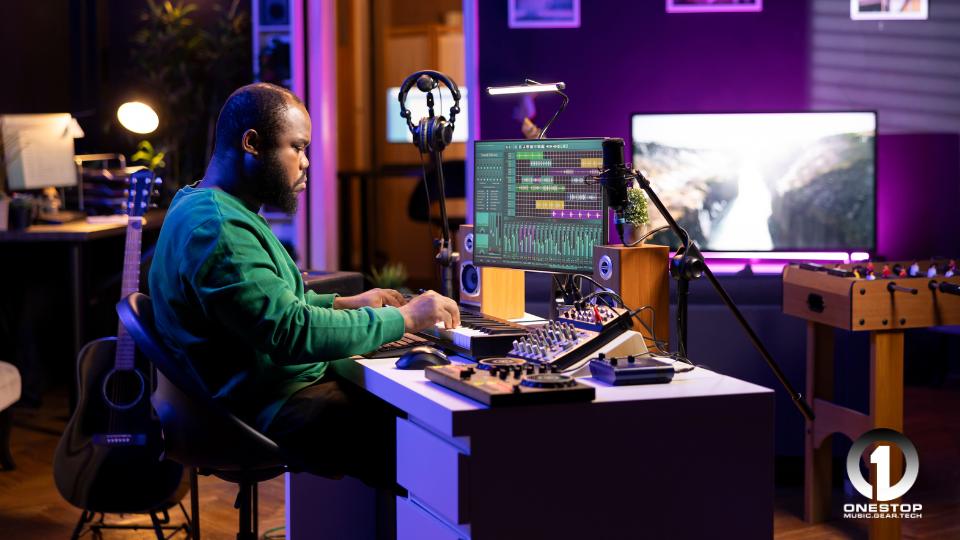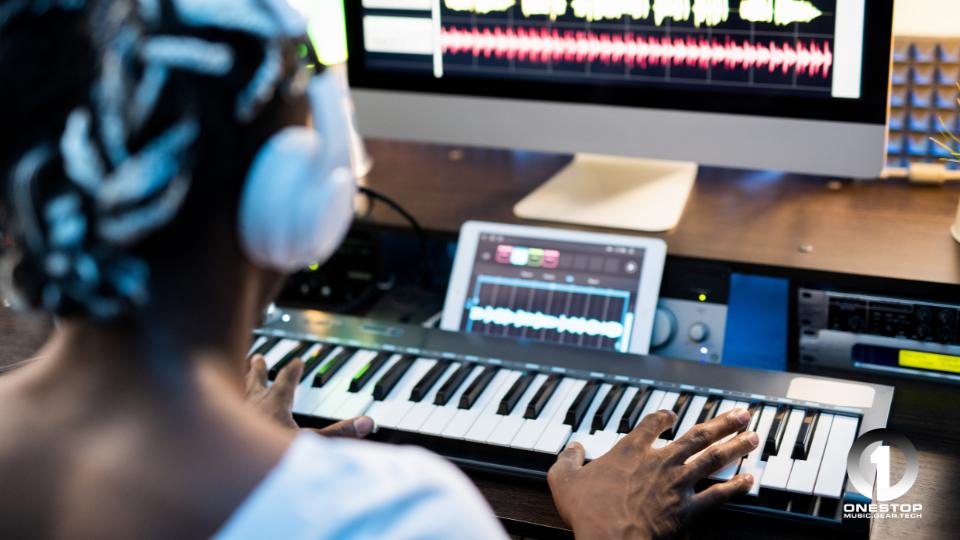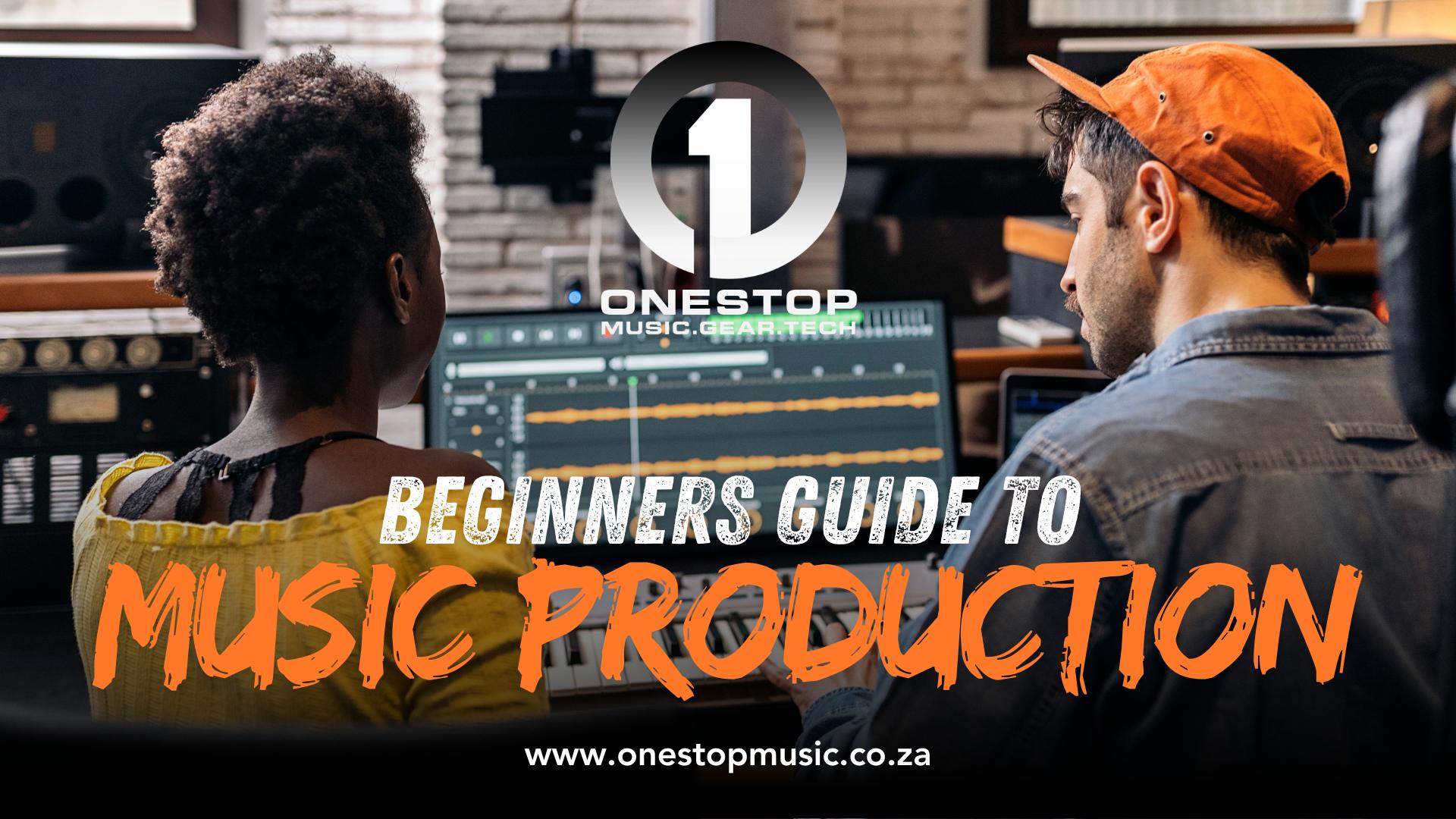Introduction
Ever wondered how your favorite artists create those infectious melodies and thumping basslines? The answer lies in the realm of music production. With the right tools and a little creativity, you can transform your musical ideas into tangible tracks. Let’s dive into the basics of music production and get you started on your journey.
Essential Tools
- Digital Audio Workstation (DAW): This is your digital studio. Popular options include Ableton Live, FL Studio, Logic Pro, and Reaper.
- Audio Interface: This device connects your instruments and microphones to your computer.
- MIDI Keyboard: This allows you to input musical notes and control virtual instruments.
- Studio Monitors: These speakers provide accurate sound reproduction for mixing and mastering.
- Headphones: A must-have for monitoring audio and isolating yourself from distractions.

Understanding the Basics
The Arrangement:
This is the blueprint of your track. It involves sequencing different elements like the intro, verse, chorus, bridge, and outro.
Popular Arrangements in Pop Music
Pop music is known for its catchy melodies, infectious rhythms, and often simple arrangements that are designed to be easily accessible to a wide audience. Here are some common arrangement structures found in popular pop songs:
Verse-Chorus Structure
This is the most common arrangement in pop music. It consists of alternating verses and choruses.
- Verse: This section typically introduces the song’s theme or story. It often has a more subdued melody and instrumentation.
- Chorus: This is the main hook or refrain of the song. It’s usually the most memorable part and is often repeated throughout the song.
Verse-Chorus-Bridge Structure
This arrangement adds a bridge section between the verses and choruses.
- Bridge: This section offers a contrast or change in melody, harmony, or rhythm, providing a musical break or a new perspective on the song.
Intro-Verse-Chorus-Verse-Chorus-Bridge-Chorus-Outro Structure
This is a more extended arrangement that allows for more musical development and variation.
- Intro: This section sets the mood or atmosphere for the song.
- Outro: This section concludes the song, often fading out or repeating the chorus.
Medley
A medley combines multiple songs or sections of songs into a single continuous piece. This can be used to create a more dynamic and energetic performance.
Instrumental Breaks
These sections feature instrumental solos or instrumental passages that showcase the musicianship of the band or artists.
Reprises
A reprise is a repetition of a previous section, often the chorus, towards the end of the song. This can create a sense of closure or build anticipation for the final chorus.
Examples of popular pop songs that use these arrangements:
- “Shape of You” by Ed Sheeran: Verse-Chorus structure
- “Bad Guy” by Billie Eilish: Verse-Chorus-Bridge structure
- “Bohemian Rhapsody” by Queen: Medley with multiple sections
- “Sweet Child o’ Mine” by Guns N’ Roses: Instrumental break and reprise
By understanding these common arrangements, you can better appreciate the structure and composition of your favorite pop songs.
The Beat:
This is the rhythmic foundation of your track. It often includes drums, percussion, and basslines.
The Melody:
This is the musical line that captures the essence of your song. It can be created using instruments, synths, or vocals.
The Harmony:
This refers to the chords that accompany the melody. It provides the tonal context for your song.

Tips for Writing a Catchy Melody
Here are some tips to help you craft a memorable melody for your song:
1. Start with a Simple Idea
- Begin with a basic melodic line or phrase.
- Keep it simple and repetitive at first.
- You can add complexity later.
2. Consider the Lyrics
- The melody should complement the lyrics.
- Emphasize key words or phrases with melodic emphasis.
- Try to match the rhythm of the lyrics to the melody.
3. Experiment with Intervals
- Play around with different intervals between notes.
- Experiment with major and minor scales, as well as modes.
- Consider using unconventional intervals for a more unique sound.
4. Use a Melodic Pattern
- A melodic pattern is a repeating sequence of notes or intervals.
- This can help create a sense of familiarity and recognition.
- Try using patterns like ascending or descending scales, arpeggios, or ostinatos.
5. Think About the Mood and Atmosphere
- The melody should reflect the desired mood of the song.
- For example, a happy and upbeat song might have a bouncy and cheerful melody.
- A sad or melancholic song might have a more minor and descending melody.
6. Use a Melodic Contour
- The melodic contour is the shape or path of the melody.
- Consider using a variety of contours, such as ascending, descending, or undulating.
- A contrasting contour can add interest and variety to your melody.
7. Listen to Other Music
- Analyze the melodies of your favorite songs.
- Pay attention to the use of intervals, patterns, and contours.
- Try to incorporate elements you like into your own music.
8. Don’t Be Afraid to Experiment
- The best way to find your own unique melodic voice is to experiment.
- Try different approaches and see what works for you.
- Don’t be afraid to make mistakes or take risks.
Remember, the most important thing is to have fun and enjoy the process of creating music. With practice and experimentation, you can develop your own distinctive melodic style.

The Production Process
- Inspiration: Start by finding inspiration from your favorite artists or genres.
- Sketching: Experiment with different sounds and rhythms to create a basic idea for your track.
- Arranging: Sequence the elements of your track and refine the arrangement.
- Mixing: Balance the levels of different instruments and effects to achieve a cohesive sound.
- Mastering: Apply final adjustments to the overall volume, tone, and dynamics of your track.
Tips for Beginners
- Start small: Don’t try to do everything at once. Focus on mastering one aspect of production at a time.
- Experiment: Don’t be afraid to try new things and experiment with different sounds.
- Learn from others: Watch tutorials, listen to podcasts, and join online communities to learn from experienced producers.
- Practice regularly: The more you practice, the better you’ll become.
Conclusion
Music production is a rewarding and creative endeavor. With the right tools, knowledge, and dedication, you can bring your musical visions to life. So, grab your DAW, start experimenting, and let your creativity flow!












